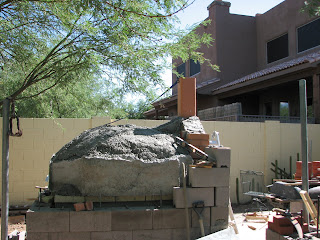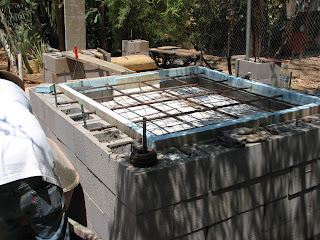Christmas this year was a hoot. My butchers John and Dean at Bashas’ in Carefree cut me out a nice 6 bone Standing Rib Roast. We try to avoid turkey on both Thanksgiving and Christmas because Kathy has usually been cooking up to 8o turkey dinners… some years more and so we go a different direction.


I stuff a few cloves of garlic into the cut between the roast and the bones and a tuck a few sprigs of rosemary under the strings the butcher tied the roast with.
I used my new iron roasting pan that I got at a garage sale for $10. I pre heated the oven to 410°f. I popped the roast into the hot oven for about 45 minutes, it was nice and brown, so I reduced the temperature to 375°f for another hour and a half once the roast reached 118°f at the thickest part of the roast I took it out and let it rest for 20 minutes.

It was perfect.

I roasted a few chiles and peeled them and made a quick calabacitas along with some oven roasted tri-color potatoes and baby carrots

We also hadAspargus and creamed Horseradish, a cheese plate and Pecan Pie.
Our kids came by along with my mom. We feasted and drank some good zinfindel and all in all had a great night. If you have any questions on these or any other recipes just ask. Have a great New Year.
Warmly,
Mad Coyote Joe































































